#High carb e protein
Explore tagged Tumblr posts
Note
how do you get that big of a chest? do you have advice?
ive been on e for four years and have hardly an a-cup
Eat a lot. Protein, fats, carbs. Nuts seem to help. Massage regularly, no idea if it helps but it couldn't hurt. Maybe see if your E dose is even high enough and you're not being under-supplied.
155 notes
·
View notes
Text
CHICKEN CHOW MEIN! protein) (Low carb, high
Have you tried this? Download My Recipe Cook E Books 📚 Link in Bio
Save and share this recipe with friends and family!
Servings: 4
Ingredients:
3 packs - Low Carb Spaghetti
1 carrot, cut into strips
1½ medium white onion, cut into strips
1 lb chicken breast, cut into slices
1½ cup cabbage, shredded
Green onion
Sesame seeds to top
Chow Mein Sauce:
3 tbsp tamari
2 tbsp sesame oil
2 tbsp sweetener
¼ cup bone broth (or more)
Pans: @madein Ceramiclad Nonstick Pans
Directions:
1. In a separate bowl, make your chow mein sauce.
2. Season your chicken with salt and pepper.
3. On medium heat, cook chicken breast until golden brown, then remove from your @madein nonstick pan.
4. Next, cook your vegetables until al dente. Start with your onion and carrots, then add cabbage.
5. Add your spaghetti noodles and toss. Add your chicken back in the pan and top with your sauce.
6. Top with green onion and sesame seeds and enjoy!
I am so in love with these new line of pans from @madein! They're non-toxic and made in the USA. Each one is constructed with Premium 5-Ply Stainless Clad, which means you can use with gas, electric, or induction cooktop!!
Let me know if you guys make this!! You're going to be so obsessed!
#recipes#dinner#breakfast#cooking#ketogenic#keto diet#ketorecipes#recipies#low calorie meals#keto#weight loss#delicious
17 notes
·
View notes
Text
Top-Rated Natural Dog Food – Blue Buffalo Life Protection -Product Reviews Customers

Product details
Brand: Blue Buffalo
Flavor: Chicken & Brown Rice
Age Range: Adult Dogs
Item Form: Kibble
Specific Uses: Immune Support
Item Details
Brand: Blue Buffalo
Flavor: Chicken & Brown Rice
Age Range: Adult Dogs
Item Form: Kibble
Special Ingredients: Antioxidants for Immune Support
Container Type: Bag
Breed Recommendation: Medium Breeds & All Breed Sizes
Perfect For: Birthdays & Special Treats
Allergen-Friendly: Wheat-Free, Corn-Free, Soy-Free, No Preservatives
Customer Favorite: ⭐ 4.6/5 Stars (50,833 Ratings)
Bestseller Rank: #1 in Dry Dog Food, #6 in Pet Supplies
Main Ingredients:
Deboned Chicken, Chicken Meal – High-quality protein for muscle support
Whole Grains: Brown Rice, Barley, Oatmeal – Provides essential energy
Healthy Additions:
Pea Starch, Flaxseed, Chicken Fat – Supports a healthy skin & coat.
Natural Flavor, Dried Tomato Pomace, Peas, Pea Protein, Salt, Potassium Chloride – Enhances taste & provides essential minerals.
Superfoods & Antioxidants:
Blueberries, Cranberries, Barley Grass, Parsley, Turmeric, Dried Kelp, – Boosts immune health
Sweet Potatoes, Carrots, Garlic, Vegetable Juice for Color – Rich in vitamins and fiber
Digestive & Joint Health:
Direct Dehydrated Alfalfa Pellets, Dried Chicory Root, Potatoes, Pea Fiber, Alfalfa Nutrient Concentrate – Aids digestion & gut health
Glucosamine Hydrochloride, Calcium Carbonate, Choline Chloride, DL-Methionine – Supports strong joints & mobility
Essential Vitamins & minerals:
Vitamin E, Vitamin C, B-Complex , Vitamin D3, Vitamin A – Complete nutritional balance
Zinc Amino Acid Chelate, Zinc Sulfate, Ferrous Sulfate, Iron Amino Acid Chelate, Copper Sulfate, Copper Amino Acid Chelate, Manganese Sulfate, Manganese Amino Acid Chelate, Calcium Iodate, Sodium Selenite – Vital minerals for overall health
Probiotics & Natural Preservatives:
Dried Yeast, Dried Enterococcus faecium, Dried Lactobacillus acidophilus, Dried Bacillus subtilis – Promotes healthy digestion & gut flora
Oil of Rosemary, Preserved with Mixed Tocopherols – Natural preservatives to maintain freshness
About this item
REAL CHICKEN FIRST – High-quality deboned chicken for strong muscles.
WHOLESOME ING REDIENTS– Brown rice, cranberries & veggies for balanced nutrition.
NO FILLERS OR BY-PRODUCTS – No poultry by-products, corn, wheat, or soy.
OPTIMAL NUTRITION – Essential proteins, carbs & Omega-3 & 6 for a healthy coat.
IMMUNE SUPPORT – Includes Life Source Bits packed with antioxidants, vitamins & minerals
LARGE 34-lb. BAG – Perfect for keeping your pup happy & healthy.
Read More Click Buy From Amazon>>
⭐Blue Buffalo Life Protection-Product Reviews Customers
1. Freddy says I am ready, for the more of that blue buffalo, don’t you know?
My best friend, really enjoys this. That manners the most. But the ingredients also! I feel good about feeding this to him. It’s reasonably priced. I am very happy with the product. Most importantly Freddy is.
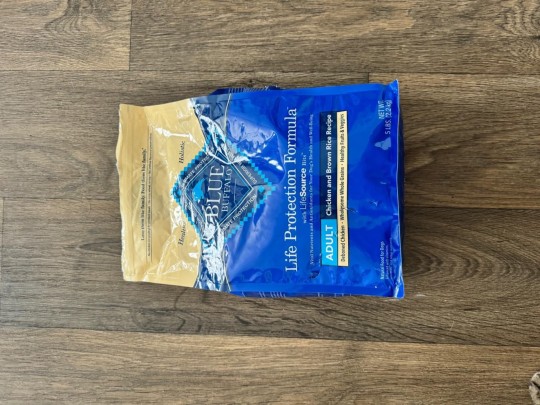
2.Picky Eater Loves it
Love Blue buffalo Food! High quality ingredients, along with great resealable packaging. Even the cat tried to eat the food thru the bag! 5lbs is just what was needed to make the transition to adult food. Was packaged perfectly and the best by date was over a year out.I have a Mini schnauzer named Bunnie, adopted at 8 weeks from a local rescue, has been a picky eater since day one in her new home. We tried the puppy food recommend from the rescue with no luck, the cute thing wouldn't eat out of a dog bowl either.After a lot of research into bags of dog food found that blue buffalo was highly rated and had an ingredient list that was wholesome. Bunnie tried the Blue Buffalo Puppy Chicken and Rice and she love it! Finally a food she enjoyed with the small triangle pieces and great taste has encouraged her to grown big and forward to a year and now and she has grown up to her full size of 16lb. We are making the Switch to the Blue Buffalo Adult Chicken and Rice Food and Bunnie loves the bigger sized triange pieces along with the same great flavor. She had an easy transition from puppy food to adult food, mixed properly throughout a couple weeks of her feeding. No tummy upsets and she is more eager than ever for her breakfast and Dinner. One Happy Pup!

3.Always a winner dog food
I've always trusted this brand. Mixed with their wet dog food is a treat for my dogs every time! I love add pumpkin powder, berries, and chopped up carrots for extra antioxidants and vitamins. Annnnnd I always subscribe to pet products because I get a discount + never have to worry about running out!
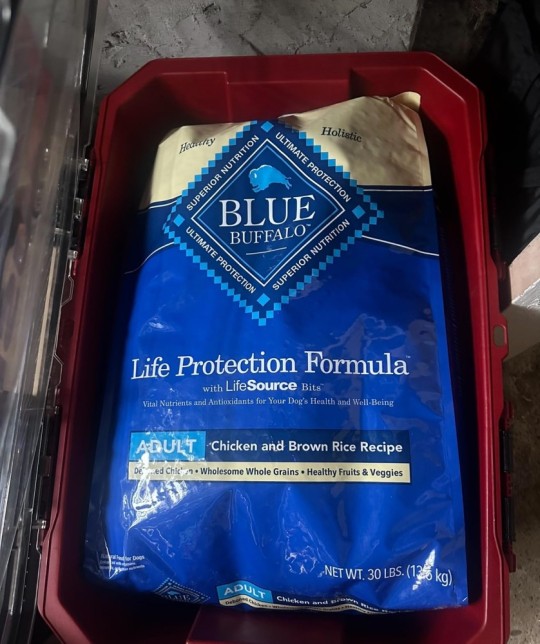
4.Quality ingredients
Great quality and the dogs love it. I made homemade fresh food for a year and they are happier and healthier after switching to blue Buffalo.

#blue buffalo#blue buffalo life protection#blue buffalo life protection formula#blue buffalo dog food#blue buffalo life protection dog food#life protection formula#blue buffalo life protection small breed#blue buffalo life protection puppy#blue buffalo life protection recall#dog food blue buffalo#blue buffalo life protection review#blue buffalo life protection formula natural adult dry dog food#blue buffalo dog food review
3 notes
·
View notes
Text
Keto Waffles with Almond Flour and No-Sugar Vermont Syrup: A Delicious and Healthy Choice
If you’re following a keto diet, you know that finding tasty, low-carb alternatives to your favorite foods can be a challenge. But what if you could enjoy a classic breakfast staple—waffles—without sacrificing your health goals? With almond flour and no-sugar Vermont syrup, you can make delicious keto waffles that not only taste great but offer several health benefits. Here’s how, plus why they’re a great choice for your diet.
Recipe for Keto Waffles with Almond Flour
Ingredients:
• 1 cup almond flour
• 2 large eggs
• 1/4 cup unsweetened almond milk (or any low-carb milk alternative)
• 1 teaspoon baking powder
• 1 teaspoon vanilla extract
• 2 tablespoons melted butter (or coconut oil for dairy-free)
• A pinch of salt
• No-sugar Vermont syrup (for topping)
Instructions:
1. Preheat your waffle maker.
2. In a bowl, mix the almond flour, baking powder, and salt.
3. In a separate bowl, whisk the eggs, melted butter, vanilla extract, and almond milk until smooth.
4. Combine the wet ingredients with the dry ingredients, mixing until well blended.
5. Pour the batter into the preheated waffle maker and cook according to the manufacturer’s instructions (usually 3-4 minutes).
6. Serve your waffles hot, drizzled with no-sugar Vermont syrup, and enjoy!
Health Benefits of Keto Waffles
1. Low in Carbs, High in Healthy Fats
Almond flour is naturally low in carbohydrates and high in healthy fats, making it an ideal ingredient for keto recipes. It helps you stay in ketosis while providing essential fatty acids that support heart health and brain function.
2. Rich in Protein
Eggs and almond flour both provide a good amount of protein, helping you feel fuller for longer. This can help curb cravings and reduce snacking throughout the day, supporting your weight loss goals.
3. Packed with Nutrients
Almond flour is a nutrient-dense alternative to traditional flour. It’s rich in vitamins and minerals like vitamin E, magnesium, and manganese, all of which contribute to overall health, including better skin, bone, and immune system function.
4. No Added Sugars
Using no-sugar Vermont syrup ensures you’re avoiding the spike in blood sugar that comes with traditional syrups. Many sugar-free syrups are sweetened with alternatives like monk fruit or stevia, which don’t affect blood glucose levels, making them perfect for keto.
5. Gluten-Free
Almond flour is naturally gluten-free, which can improve digestion and reduce inflammation in people sensitive to gluten or those with celiac disease. It’s also a more gut-friendly option for many who experience bloating with regular wheat flour.
6. Supports Weight Loss
By keeping your carb intake low and promoting a feeling of fullness, these keto waffles can help support weight loss. Almond flour is a low-glycemic ingredient, meaning it has a minimal impact on blood sugar, which helps prevent insulin spikes that can lead to fat storage.
7. Improved Energy Levels
The healthy fats and protein in these waffles provide a steady energy supply, unlike traditional carb-heavy waffles that often lead to energy crashes after eating. You’ll feel more alert and energized throughout your day.
Final Thoughts
Keto waffles made with almond flour and topped with no-sugar Vermont syrup are not just a tasty breakfast—they’re a powerhouse of nutrition that supports your keto lifestyle. With fewer carbs, plenty of healthy fats, and a host of vitamins and minerals, they’re a perfect way to start your day without derailing your progress. So go ahead, indulge in these waffles guilt-free, and enjoy the health benefits they bring!
#keto#ketofriendly#ketoweightloss#ketorecipes#male#keto diet#before and after#man#lowcarb#waffles#breakfast
2 notes
·
View notes
Text
Ultimate Guide to the Best Keto Diet Food List: Top Foods to Stay in Ketosis

The ketogenic diet, commonly known as the keto diet, has gained immense popularity for its potential to help with weight loss, improved energy levels, and overall health. At the core of this diet is a high-fat, low-carb approach that shifts the body into a state of ketosis. To succeed on this diet, it’s essential to know which foods are best suited for it. In this article, we'll provide you with the best keto diet food list that will help you stay on track and achieve your goals.
Think you know the keto diet? Test your knowledge with our interactive quiz! 🧠💪 Find out how much you really know. Take the quiz now.
What is the Keto Diet?

Before diving into the best keto diet food list, let’s briefly understand what the keto diet is. The keto diet involves drastically reducing your carbohydrate intake and replacing it with fat. This reduction in carbs puts your body into a metabolic state called ketosis, where fat, instead of carbohydrates, becomes the primary fuel source.
Benefits of the Keto Diet
The keto diet offers several benefits:
Weight Loss: By cutting down carbs, the body burns fat for energy.
Improved Mental Focus: The brain uses ketones, which are produced during ketosis, as a fuel source, leading to better mental clarity.
Stable Blood Sugar Levels: The keto diet can help manage blood sugar levels, which is beneficial for people with diabetes.
Best Keto Diet Food List
When following a keto diet, choosing the right foods is crucial. Here’s the best keto diet food list to help you stay in ketosis and enjoy a variety of delicious meals.
1. Healthy Fats and Oils

Healthy fats are the cornerstone of the keto diet. Here are some of the best sources:
Avocado Oil: Great for cooking due to its high smoke point.
Olive Oil: Perfect for salads and low-heat cooking.
Coconut Oil: Rich in medium-chain triglycerides (MCTs) that support ketosis.
Butter and Ghee: Ideal for cooking and adding flavor to dishes.
Nuts and Seeds: Almonds, chia seeds, and flaxseeds are excellent sources of healthy fats.
2. Low-Carb Vegetables
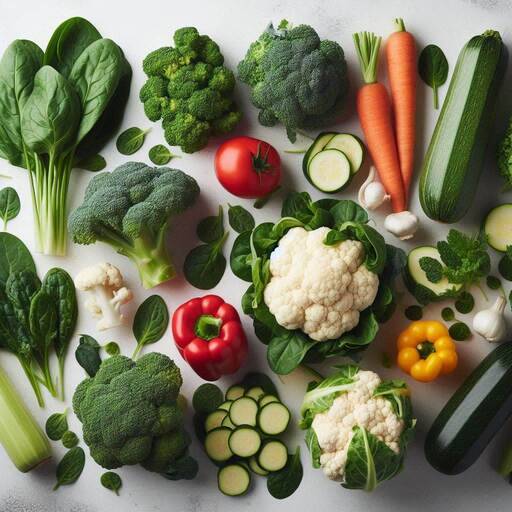
Vegetables are an essential part of the best keto diet food list as they provide fiber, vitamins, and minerals with minimal carbs:
Leafy Greens: Spinach, kale, and arugula are low in carbs and high in nutrients.
Cruciferous Vegetables: Broccoli, cauliflower, and Brussels sprouts are great for keto-friendly dishes.
Zucchini: A versatile vegetable that can be used in place of pasta or as a side dish.
Bell Peppers: Low in carbs and rich in vitamins, making them a tasty addition to any meal.
Mushrooms: Low in carbs and add a meaty texture to dishes.
3. Protein Sources
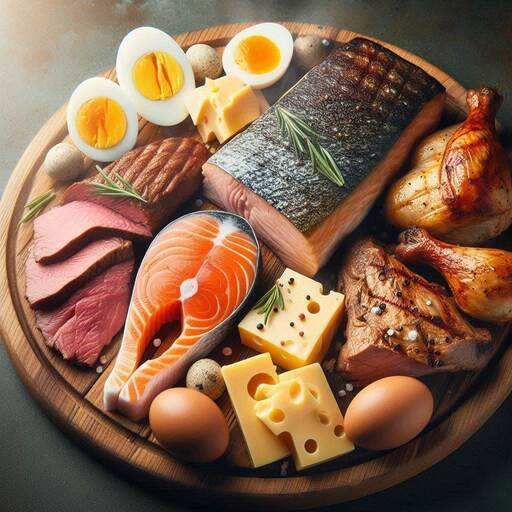
While the keto diet is high in fat, it also includes moderate amounts of protein. Here are some top protein options:
Fatty Fish: Salmon, mackerel, and sardines are rich in omega-3 fatty acids and perfect for the keto diet.
Meat: Grass-fed beef, pork, and lamb provide essential nutrients and are keto-friendly.
Poultry: Chicken thighs and turkey are great for adding variety to your meals.
Eggs: A versatile protein source that can be used in various keto recipes.
Cheese: Hard cheeses like cheddar and parmesan are low in carbs and high in fat.
Think you know the keto diet? Test your knowledge with our interactive quiz! 🧠💪 Find out how much you really know. Take the quiz now.
4. Dairy Products
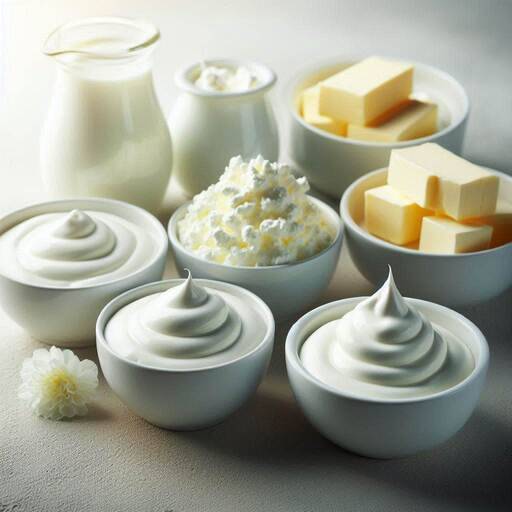
Dairy products are another key component of the best keto diet food list, providing both fat and protein:
Heavy Cream: Use it in coffee or keto-friendly desserts.
Full-Fat Yogurt: Choose unsweetened versions to avoid extra carbs.
Cream Cheese: A delicious addition to snacks and meals.
Sour Cream: Perfect for adding richness to your dishes.
Butter: A staple in keto cooking, ideal for sautéing and baking.
5. Nuts and Seeds

Nuts and seeds are excellent snacks that are high in healthy fats and low in carbs:
Almonds: A great source of vitamin E and magnesium.
Walnuts: Rich in omega-3 fatty acids, perfect for keto.
Chia Seeds: High in fiber and can be used in puddings and smoothies.
Flaxseeds: Excellent for adding to keto-friendly bread and baked goods.
Pumpkin Seeds: A crunchy snack with healthy fats and protein.
6. Berries

While most fruits are high in sugar and carbs, some berries can fit into a keto diet:
Strawberries: Low in carbs and can be enjoyed in moderation.
Raspberries: High in fiber and low in sugar.
Blackberries: Another low-carb berry option for keto dieters.
Blueberries: Best consumed in small quantities due to their higher carb content.
7. Beverages

Staying hydrated is crucial, and there are several keto-friendly drink options:
Water: The best choice for staying hydrated.
Herbal Teas: Unsweetened teas like green tea or chamomile are keto-friendly.
Coffee: Black coffee or with added heavy cream is ideal for the keto diet.
Bone Broth: Provides electrolytes and is perfect for those on a keto diet.
Sparkling Water: Choose unsweetened versions for a refreshing drink.
8. Snacks

The keto diet doesn’t mean you have to give up snacking. Here are some keto-friendly snacks:
Pork Rinds: A crunchy, low-carb snack.
Cheese Crisps: Made from baked cheese, these are a perfect keto snack.
Hard-Boiled Eggs: Simple and nutritious.
Olives: High in healthy fats and low in carbs.
Keto Bars: Low-carb bars specifically made for keto dieters.
Tips for Following the Best Keto Diet Food List

To make the most out of the best keto diet food list, here are some tips:
Meal Prep: Plan and prepare your meals in advance to stay on track.
Read Labels: Always check for hidden carbs and sugars in packaged foods.
Stay Hydrated: Drink plenty of water to support your body during ketosis.
Monitor Macros: Keep track of your fat, protein, and carb intake to ensure you stay within your keto goals.
Think you know the keto diet? Test your knowledge with our interactive quiz! 🧠💪 Find out how much you really know. Take the quiz now.
Conclusion
The best keto diet food list is packed with delicious and nutritious options that will help you succeed on your keto journey. By focusing on healthy fats, low-carb vegetables, quality proteins, and keto-friendly snacks, you can enjoy a variety of meals while staying in ketosis. Remember to plan your meals, stay hydrated, and always read labels to ensure you're sticking to your keto goals.
The ketogenic diet is not just a fad; it's a lifestyle change that can offer numerous health benefits. With the right foods, you can achieve your desired results and maintain them over time.
2 notes
·
View notes
Text
★𝐇𝐞𝐚𝐥𝐭𝐡𝐲 𝐌𝐞𝐚𝐥𝐬★
• My top picks of meals throughout the year to help boost your metabolism and bring you the correct amount of nutrients to get you towards your goals!! •

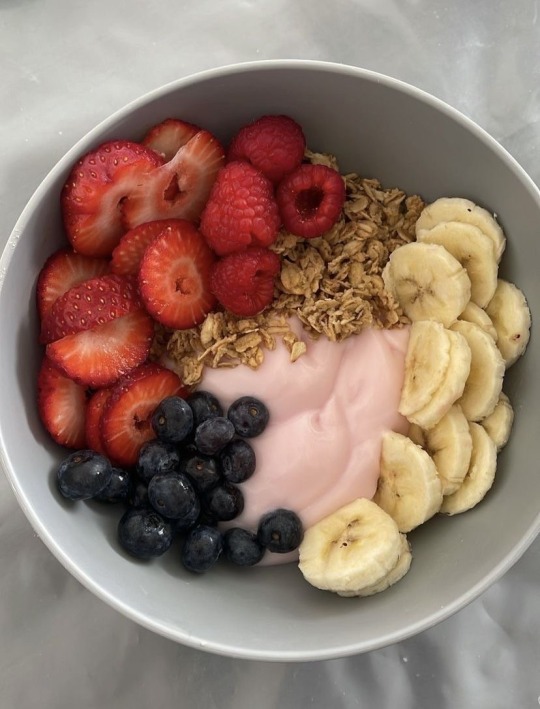

REMINDER: eat 3 meals a day and always eat every four to five hours! snacking in between is okay but do it in moderation!
BREAKFAST:
>> you should have carbs, protein, healthy fats, and fiber in your breakfast! <<
• no more cereal! these are loaded with added sugars. instead switch it out with fruits. fruits carry natural sugars that can fuel your sweet tooth and keep you feeling refreshed.
• avocado toast will never fail you! go for wheat bread instead of white bread since whole foods provide more vitamins, minerals, and fiber. wheat bread can help with stubborn belly fat and avocados are always your best bet. They’re rich in many nutrients!
• Eggs help motivate weight loss and have only 78 calories! They’re extremely nutritious and can be eaten with almost anything in your breakfast. It is recommended to only eat 1-2 eggs per day since they’re considered to be high in cholesterol.
• yogurt bowls! These are always super tasty and you’re able to add any fruit of your choice to them! They’re very filling and are super fun and easy to make! especially if you’re not into cooking or can’t cook these are healthy alternatives.
>>> Add me on pinterest to see some of my ideas of breakfast! Here

LUNCH:
>> you should have lean protein, fiber-rich sources or carbs, veggies, and healthy fats in your lunch! <<
• Salads are amazing for lunch. They have Vitamin A and C and lots of calcium and fiber for your diet. It’s low in calories and high in volume and fiber which will keep you satisfied longer. Instead of ranch dressing try to switch it out for oil and vinegar.
• lettuce wraps are my all time favorite. instead of using tortillas you can use lettuce to wrap up your proteins and fibers. This alone can help boost your metabolism and is just as good as a regular wrap!
• sushi bowls! white rice isnt necessarily as good for you but still has its perks! try to switch to brown rice if you can. sushi bowls are healthy for you because it has many veggies and high quality protein. fish provides you with the minerals you need (including iron) and can leave you feeling happy afterwards.
• Meats and Veggies! This one is pretty obvious… your lunch could be as simple as some meats and veggies on your plate. Go for chicken, pork, lamb and beef for your meats since they’re rich in protein. green veggies like broccoli, spinach, kale, etc are always a best option for any diet!
>>> Follow me on pinterest to see some of my ideas of lunch! Here

DINNER:
>> you should have lean protein, veggies, whole grains, and fruits in your dinner!<<
• Chicken, Rice, and Veggies are an amazing combination for dinner! rich in proteins, fiber, and carbs and will leave you feeling full and ready to end the day off.
• Soups! any soups with beans, mixed veggies, or non processed meats are great for weight loss! These are especially important in the winter if it’s too cold for you to workout! Soups are best made homemade as well.
• Pasta is amazing to eat in moderation. Making your own pasta sauce from greens like spinach or kale can really add flavor to it. They’re extremely customizable and always super tasty!
• Salmon and asparagus! now i know asparagus can make your urine stink, which is always a downgrade, but it carry’s many nutrients like vitamin C and E. it can also relieve inflammatory conditions and salmon packs many proteins to aid weight loss.
>>> Follow me on pinterest to see of my ideas of dinner! Here
7 notes
·
View notes
Note
I've heard about ancient trans women using herbs or stuff to get basically "natural" e, but did that ever happen with ancient trans men? or is testosterone like exclusively a product of animals? :0 (also is estrogen also a controlled substance? why is t? athletes? sorry i hope i'm not bothering you!)
To my knowledge estrogen is not a controlled substance, no. I wouldn't be able to tell you EXACTLY why T is controlled and E isn't, but I do think testosterone is generally a stronger hormone, so that might be the reason. IIRC there are also more immediate health risks to testosterone, such as increased rates of heart attacks.
But yes, there are ways of naturally boosting your testosterone levels! Mostly just regurgitating the Healthline article I found: exercising, eating plenty of protein / fat / carbs, getting plenty of vitamin D, and avoiding alcohol are ways to maintain high or relatively high T levels.
3 notes
·
View notes
Text
These Health Risks are slowly KILLING You
You might not know this but these health risks are killing you bit by bit
Health risks may include:
Heart Disease: Overweight people are at a higher risk of developing heart disease due to many factors such as high blood pressure, high cholesterol, and increased strain on the heart which leads to death
Type 2 Diabetes: Excess weight promotes inflammation and releases fatty acids, further impairing insulin function and potentially leading to the development of type 2 diabetes.
High Blood Pressure: Excess weight can contribute to high blood pressure, which increases the risk of heart disease, stroke, and kidney disease.
Joint Pain: Carrying excess weight puts added pressure on the joints, leading to pain and inflammation, especially in weight-bearing joints such as the knees and hips.
Sleep Apnea: Obesity is a major risk factor for sleep apnea, a condition characterized by interrupted breathing during sleep.
So how can you avoid these health risk that potentially lead to death:
Eat heart-healthy ingredients such as: lean proteins, whole grains, fruits, and vegetables and avoid eating saturated fats and cholesterol
Eat carbs, fiber-rich foods, and healthy fats: This helps regulate blood sugar levels and reduce the risk of developing diabetes
Eat foods rich in potassium and magnesium but low in sodium which helps lower blood pressure
Focus on nutrient-dense, low-calorie foods, and foods rich in omega-3 fatty acids. This reduces joint pain and inflammation
This is all you need to avoid health risks.
Fortunately, you don’t need to go find these foods because…
I made an e-book that has these solutions.
My recipes are proven to work and are backed by many studies
If you want to flip your life around, this is your opportunity:
It's YOUR Choice:
Get my book:
All eyes will be looking on you
Come back from summer a DIFFERENT person
Lose up-to 23 lbs in JUST 52 days
Become the healthiest version of yourself
OR
Go back to being fat:
Get fat-shamed on the street
Come back from summer just like last summer
Be ashamed of yourself
Get sick of one of the risks we stated above
#weight loss#fat loss#how to lose weight#recipes#weight loss recipes#weight loss exercise#e books#fitness#excercise
3 notes
·
View notes
Text
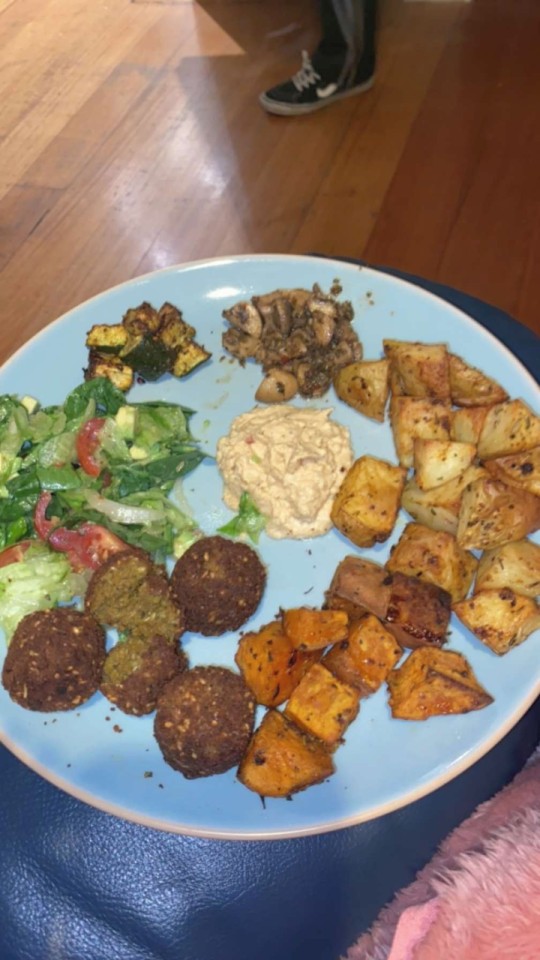
Nearly 20g of protein (falafels, pumpkin seeds)
Lots of healthy carbs/fibre (potato, sweet potato) to sustain energy throughout the day
Also contains:
vitamins E, K & Bs
over 50% of your daily vitamin C
omegas (healthy fats)
high in manganese, potassium, copper & phosphorus
Please support me by liking/sharing. Follow for more inspiration :)
Love to all🫶
#plant based#healthy#food#inspiration#nutrients#protein#cooking#falafel#salad#sweet potatoes#potatoes#vitamin c#vitamins#minerals#meal ideas#lunch ideas#dinner ideas#lunch#dinner#ideas#meals#simple meals#quick meals#oven#health#nutrition#recipe#meal inspiration#weight loss#whole foods
6 notes
·
View notes
Text
HEALTHY FOODS
🌟 Healthy foods play a crucial role in maintaining overall well-being. Here are some nutritious options to include in your diet.
Fruits and Berries:
Apples: High in fiber, vitamin C, and antioxidants.
Avocados: Rich in healthy fats, potassium, and vitamin C.
Bananas: A convenient source of potassium and vitamin B6.
Blueberries: Packed with antioxidants.
Oranges: Known for vitamin C and fiber.
Strawberries: Low in carbs and calories, with vitamin C and manganese.

Eggs:
Highly nutritious and a great protein source.

Lean Meats:
Lean beef: Provides protein and bioavailable iron.
Chicken breasts: Low in fat, high in protein.
Lamb and mutton: Rich in omega-3 fatty acids.
Nuts and Seeds:
Almonds: Contain vitamin E, antioxidants, and fiber.

Healthy Oils:
Olive oil: Beneficial for heart health.
1 note
·
View note
Text
Best Keto for Loose Weight
Best Keto for Loose Weight
The ketogenic (keto) diet is a low-carbohydrate, high-fat diet that may help some people lose weight. To follow a keto diet for weight loss:
1. Low Carbs: Limit your daily carbohydrate intake to around 20-50 grams.
On a low-carb diet, focus on reducing your intake of foods high in carbohydrates. Opt for:
a). Non-Starchy Vegetables: Leafy greens, broccoli, cauliflower, zucchini, etc.
b). Meat and Poultry: Lean cuts without added sugars or breading.
c). Fish and Seafood: Rich in healthy fats and low in carbs.
d). Eggs: A versatile and low-carb protein source.
e). Nuts and Seeds: In moderation, as they provide healthy fats and protein.
f). Healthy Fats: Avocado, olive oil, coconut oil, and butter.
Be mindful of high-carb foods to avoid, such as grains, sugary items, and starchy vegetables. Adjust your carb intake based on your specific goals and health considerations.
2. High Fat: Consume healthy fats such as avocados, nuts, seeds, and olive oil.
Include healthy sources of fats in your high-fat, keto-friendly diet:
a). Avocado: Rich in monounsaturated fats.
b). Olive Oil: Extra virgin olive oil is a good source of heart-healthy fats.
c). Coconut Oil: Provides medium-chain triglycerides (MCTs).
d). Nuts and Seeds: Almonds, walnuts, chia seeds, and flaxseeds are good choices.
e). Fatty Fish: Salmon, mackerel, and sardines offer omega-3 fatty acids.
g). Cheese and Dairy: Opt for full-fat varieties in moderation.
Balancing your fat intake is crucial, and focus on incorporating these sources into your meals while keeping an eye on overall calorie consumption.
3. Moderate Protein: Include moderate amounts of protein from sources like meat, fish, and eggs.
Choose moderate protein sources to maintain a balanced keto diet:
a). Meat: Chicken, turkey, beef, and pork are good options.
b). Fish: Salmon, trout, and other fatty fish provide protein and healthy fats.
c). Eggs: A versatile and protein-rich food.
d(. Dairy: Greek yogurt, cheese, and cottage cheese in moderation.
f). Tofu and Tempeh: Plant-based protein sources.
g). Nuts and Seeds: Besides healthy fats, they offer some protein.
Adjust your protein intake based on your activity level and individual needs, but avoid excessive protein consumption, as it could potentially interfere with ketosis.
4. Avoid Sugar and Processed Foods: Cut out sugary foods and limit processed foods.
Eliminate or minimize sugar and processed foods in your keto diet:
a). Sugar: Cut out sugary beverages, candies, desserts, and high-sugar fruits.
b). Processed Foods: Avoid pre-packaged snacks, ready meals, and anything with hidden sugars.
c). Grains: Steer clear of wheat, rice, and other high-carb grains.
d). Starchy Vegetables: Limit intake of potatoes, corn, and peas.
e). Processed Meats: Some may contain added sugars or fillers, so choose wisely.
f). Low-Fat Products: Opt for full-fat versions, as low-fat often means higher sugar content.
Reading labels can help you identify and avoid hidden sugars and unwanted additives in processed foods. Stick to whole, real foods for a healthier keto approach. Read more click this link- https://tinyurl.com/ywmyru3d
Remember to consult with a healthcare professional before making significant dietary changes, as individual needs vary.
#keto#ketodiet#ketogenic#healthy food#healthy recipes#low carb#healthy eating#loose weight#weight loss meal plan#reduce belly fat
3 notes
·
View notes
Text
Why Quinoa Flour is Your New Gluten-Free Go-To
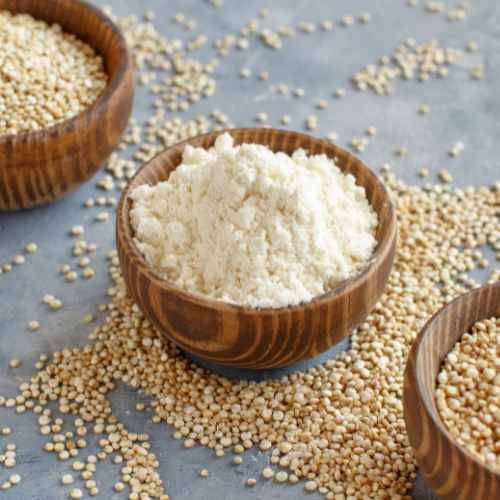
Quinoa flour is a bit of a newcomer but is already proving to be a popular choice amongst those in the know. For those navigating the world of gluten-free cooking, getting to grips with gluten-free flour can sometimes be a daunting task. Packed with all the goodness of quinoa, this flour is a game-changer for those on a gluten-free diet. In this post, we will explore everything you need to know about this fantastic flour alternative. And, for good measure, throw in some tips about how to use it in your favourite recipes.
Introducing Quinoa Flour
Quinoa may be absolutely everywhere but it turns out that it also happens to make a surprisingly good gluten-free flour. Quinoa flour, made from quinoa grain, is rising in popularity due to its excellent nutritional profile and gluten-free credentials. Made by grinding whole quinoa grains into a fine powder, it has a subtle, nutty flavour and can be used as a direct substitute for wheat flour in many recipes. Its versatility makes it an essential ingredient in gluten-free baking, allowing for the creation of delicious, nutrient-dense food items that cater to the needs of gluten-sensitive and health-conscious individuals alike. Organic quinoa flour Organic quinoa flour, as the name suggests, is derived from organically grown quinoa grains. This means they are cultivated without the use of synthetic pesticides, or fertilizers, and are non-GMO, ensuring you get the purest form of this nutritious superfood. By choosing organic quinoa flour, you are not only making a healthier choice for your body but also supporting sustainable farming practices that benefit our environment. Check out our organic quinoa flour
The Nutritional Value of Quinoa Flour
You don't need us to tell you that quinoa is really really good for you, but just in case here's a recap. Rich in Protein Quinoa flour stands out in the world of gluten-free alternatives primarily due to its high protein content. Quinoa is in fact made up of 22% protein. Unlike many other actual grains, quinoa is a complete protein, which simply means it contains all nine of the essential amino acids. Pretty exceptional for a plant-based protein! Each serving provides a substantial amount of protein, making it an excellent choice for vegetarians, vegans, or anyone looking to add more plant-based protein to their diet. Unlike traditional grain flours, this high protein content also contributes to the feeling of fullness, making meals more satisfying and aiding in weight management. This powerful little pseudo-grain is a particularly potent source of the amino acid lysine, which aids in tissue repair. Vitamins and Minerals Quinoa flour is not only protein-rich but packed with a variety of essential vitamins and minerals. It contains significant amounts of B vitamins, a wide spectrum of E vitamins, plus a host of minerals including iron, magnesium, potassium, and calcium. A rich source of silica, it can help keep skin strong and elastic. It also has powerful antioxidant properties provided by the E vitamins and flavonoids that appear in high concentrations. Omega-3 and Fatty acids Also rich in essential fatty acids, and particularly anti-inflammatory omega-3s, quinoa flour is a rich source of oleic acid which is thought to help lower LDL cholesterol. Fibre Content A fantastic source of dietary fibre. Fibre not only keeps everything moving along nicely but also helps to control blood sugar levels by slowing the absorption of sugar into the bloodstream. Plus, high-fibre foods like quinoa flour can help to manage weight by promoting a feeling of fullness and reducing overall calorie intake. So, not only does it provide a gluten-free, protein-packed alternative to traditional flours, but can also contribute to digestive health, blood sugar control, and weight management with its high fibre content. Gluten-Free And of course, one of the best things about quinoa is that it is gluten-free. Is Quinoa Low-Carb? Quinoa is often thought to be a great choice for those following a low-carb diet. Yet it is important to understand that while quinoa is lower in carbs than some types of grains, it is not strictly a low-carb food. A cup of cooked quinoa contains around 40 grams of carbs, which is more than the daily intake suggested by some low-carb diets. That being said, it's a complex carbohydrate, which means it digests slower than simple carbs and offers sustained energy without causing a rapid spike in blood sugar. Therefore, while not a low-carb food in the strictest sense, it can still be a healthier choice compared to many other grains and is enjoyed by many people following a balanced, healthy diet.
Cooking and Baking with Quinoa Flour
So, while it is good to know just how nutritional this stuff is, what we really want to know is how to cook with it. Right? We will be looking at these things in more detail over time, but here's a quick overview to get you started. The basics of cooking and baking with quinoa flour In the realm of gluten-free flour, quinoa flour is high in protein and has a high absorption rate. If you remember from our in-depth guide to using gluten-free flours, these flours can be grouped into two categories. These are protein flours and starches. High protein flours often have more pronounced flavours than starches but they do lend strength and elasticity to a bake. Starches, on the other hand, contribute little in the way of flavour yet they add a fluffy light texture to the heavier protein flours. Just as some quinoa can be slightly bitter, but not all, the same goes for its flour. Again, the flavour can range from profoundly earthy to pleasingly nutty. As with most gluten-free flours, this flour is best used alongside other varieties to get the best balance between texture and flavour for your particular recipe needs. That said, your choice of flour will depend very much on what you are making, so there are times when you can directly substitute for all-purpose wheat flour. Substituting quinoa flour in recipes Getting to grips with using gluten-free flour is always a bit of a baptism by fire. Recipes and suggestions should be used as a guideline only, largely because such flours can be wholly unpredictable. There is nothing more frustrating than a tried and tested recipe that does not deliver results. There will be some cases where it is safer to begin with a 1:1 substitution for wheat flour than others. Remember that the protein content makes it denser, and also means it will absorb more water. Gluten is required to build strength, elasticity, and structure into a bake so it is really important in bread making yet can lead to toughness in a pastry. Cakes need little in the way of gluten, yet also require a certain amount of bulk and fluffiness. And then there is flavour. Quinoa flour has a pronounced flavour. If you find that it tends towards bitterness, then it can be toasted in a moderate oven for about 10 to 15 minutes before cooling and using. So, whilst you may not want to make a delicate Victoria sponge with quinoa flour, it could be perfect for that parmesan pastry you have in mind. Or a more robustly flavoured banana muffin. So our advice is to begin with a 1:1 ratio in recipes where it may seem appropriate. Like a pastry or a muffin. If you find it too dry, then use a little less flour, or a touch more liquid. Sauces and batters rely more on the liquid content of the recipe. So substitute your flour slowly, gradually adding more until you reach the desired consistency. Tips for cooking and baking with quinoa flour Test small batches first: Before using quinoa flour in large quantities, consider trying it in smaller recipes. This allows you to understand its unique characteristics and adjust your main recipe accordingly. Blend with other flours: Quinoa flour alone may not suit all recipes. Try blending it with other gluten-free flours to create a balance of flavour and texture. Adjust liquid levels: Quinoa flour tends to absorb more liquid than wheat flour. Keep an eye on your batter or dough and be prepared to add extra liquid if it seems too dry. Store properly: Keep your quinoa flour in an airtight container in a cool, dark place. Proper storage preserves the flour's taste and extends its shelf life. Cooked quinoa flour: If the flavour of quinoa flour is too strong, try toasting it in the oven for 10-15 minutes before cooling and using. This can help to reduce bitterness. Use in savoury recipes: Quinoa flour can be a wonderful addition to savoury recipes like flatbreads, pizza dough, or pasta, where its unique flavour can shine. Healthy baking: Use quinoa flour in recipes where health is a priority. It is protein-rich and offers a nutritious alternative to traditional flour. Quinoa flour in bread-making It's a whole other subject, but the protein content of quinoa flour makes it an excellent contender in the gluten-free bread stakes. It will need to be used alongside other flours though so we will explore this more fully at a later date. To sum up, it would certainly seem that even for those without gluten-related disorders, quinoa flour offers a change of pace from traditional flours, allowing for experimentation with diverse, nutrient-rich alternatives in the kitchen. Have you seen our other gluten-free flours?
This article was reproduced on this site with permission from operafoods.com.au the “Gluten Free Flour Suppliers”. See original article:- Why Quinoa Flour is Your New Gluten-Free Go-To Read the full article
2 notes
·
View notes
Text
Aglio e Olio
Spaghetti aglio e olio is a very simple pasta dish. To accommodate my health I have taken and adjusted the recipe.
Ingredients 1-2 cups of red lentil pasta (or another protein heavy GF pasta) 1-2 tablespoons of chopped garlic (I usually use jarred which isn't as strong as fresh so I use more of it) salt pepper parsley oregano crushed red peppers lemon juice olive oil
Instructions 1. Put a pot on to boil (I always start on high heat). Once boiling, add salt then stir in your red lentil pasta (I lower to medium heat so it doesn't over boil).
2. While the pasta is cooking, put on a pan with olive oil and the chopped garlic. This should work at medium or medium low heat depending on your burner.
3. Once the garlic is turning golden, remove from heat and add the crushed red peppers (optional for heat), salt, and pepper to preference.
4. Taste the pasta. When it is your ideal texture, cut the heat and strain it. Once strained, put the pasta in the pan with the oil and garlic and return it to low heat. (I do not strain it but use a cooking spoon with holes to place the pasta in the pan with the oil. This is one less dish to wash)
5. Sprinkle the oregano, parsley, and lemon juice to preference onto the pasta. Mix then serve hot.
Notes below the break line.
Authenticity has been pretty much torn apart by smarter people by now for its classism, racism, and general nonsense. Authenticity also only works as a social construct if you live in a metropolitan area and are able bodied (at least in the US). So now I will defend my deviations from the traditional recipe:
I use lentil pasta because I need protein with every meal or I burn out. Even non gluten carbs can be a trigger if I eat too much so the lentil pasta balances me out. You can also make the dish with any GF pasta and some chicken or steak. If you need a veggie, I suggest tossing some spinach into the pasta water right before you strain it. I have found Barilla has the best, most accessible red lentil AND gluten free pasta. I don't use cheese because pre-grated cheese in stores has a clumping agent in it and grating my own cheese is very taxing. If you can grate your cheese, I recommend looking up how best to integrate cheese into the dish. You can probably forgo the lemon juice and oregano if you can figure out the cheese. I use parsley and oregano because it is good. Remember that authenticity isn't real, let alone the goal when cooking at home. The goal is that it is something you can make and it taste good. That's all. I like oregano and parsley. If you like them, use them. You can also skip them if you don't like them. The same can be said for the lemon juice. You can also not use the red pepper if you don't like heat.
This is just the way I prepare it because it works for me and my situation. I hope other people with POTS or other chronic conditions get something out of this. Thank you for reading!
#recipe#recipes#cooking#spaghetti aglio e olio#aglio e olio#gluten free#POTS#pots syndrome#dysautonomia#chronic illness#food#pasta
4 notes
·
View notes
Text
Lost?
Ma simt kinda stressed lately
actually poate mai mult si stiu ca in trecut scrisul m-a ajutat foarte mult asa ca am decis sa ii mai dau o sansa
de curand am constat faptul ca am dezvoltat diverse obsesii care in schimb m-au indepartat mai mult de cine/ce sunt eu cu adevarat, de lucrurile care imi plac si cred ca contribuie mult la feelingul asta de blocaj
nu am mai scris de mult, nu am mai citit, nu am mai mers la biblioteca, nu am mai dansat, nu am mai iesit cu prietenii ca deh țtrebuie sa invat
m am saturat sa refuz iesiri cu prietenii pe motiv ca inca mai am examene din pacate in timp ce altii se relaxeaza pe plaje but hey i am living the luxurious life of a medstudent nu? nu asta mi am dorit?
ce asteptari aveam oare legat de experienta asta
anul 4 a fost dezamagitor si nu stiu daca din cauza ca am avut eu asteptari prea mari sau pt ca poate uneori am avut atitudinea gresita
am urat aproape fiecare stagius i dupa fiecare stagiu speram ca la urmatorul va fi mai bine
ar trebui totusi sa fiu mai kind with myself, am incercat sa fac tot ce se poate, did my best date fiind conditiile( problemele de sanatate) dar cred ca zilele astea e momentul oportun sa fac un fel de audit i guess al anului asta si sa vad ce a mers si ce nu a mers
-nu cred ca a fost cea mai buna idee sa fac o obsesie din regularitatea ciclurilor pt ca ce a inceput ca o idee bune( hei uite un supliment, pare ok, uite alt supliment, hai sa mai citesc studii, cred ca am probleme cu glicemia hai sa fac analize hai sa fac programari peste programari la n doctori, iar alt supliment, alt ceai, alta tinctura si le am tot folosit ca band aids pt lipsa de somn si de mancare nutritiva si de activitati relaxante
funny isn t it ca am criticat atata timp ideea de anticonceptionale si de a pune un bandaj cand nu faci chestii simple dar am ajuns sa apelez la pseudo-band aids ca sa maschez faptul ca AM NEVOIE DE SOMN CA SA FIU OKK
si poate chiar de mai mult somn decat o persoana normala
and there s no shame in that sincer
am obosit sa mi mai fie rusine de oboseala si de faptul ca avem cu totii tolerante diferite la oboseala si stres and thats ok
unii avem activitati tip hobby de relaxare, altii merg la sala, altii gatesc
SI E OK CA ACTIVITATILE TALE SA FIE DIFERIT, sa nu fie ca ale lui x y z
cred ca pur si simplu am renuntat si la ideea de individualitate lately pt ca m au speriat f mult problemele hormonale si nu stiam in ce directie sa o apuc asa ca am tot cautat sa vad ce fac altii...minunata intrebare * oare cum invata altii la materia asta
oare ce suplimente iau altii
* oare cum dorm altii
si cand nu mi am gasit raspunsurile la cei din jurul meu, am ajuns sa caut pe reddit absolut oric eporcarie doar ca sa imi confirm eu alte lucruri
ce chestii functioneaza, pro si cons si observatii
scortisoara pt cicluri?
sau low carb
balonare dupa high protein( posibil problema cu metabolsimul sulfului=lipsa molibden, cupru?)
albire par lipsa cupru?
gluten dariy intolerance nu pot spune ca am scos ever glutenul pt simplul motiv ca credeam ca ovazul nu are gluten
OBSESIA cu productivitatea si comparatul cu alti oameni
-low carb vs high carb
2 notes
·
View notes
Photo

Vegan Mass Gainer | 100% Plant Based | High Calorie Protein Powder | Weight Gain
100% VEGAN: Made using only plant based ingredients and sustainably sourced.
CALORIE DENSE: Each serving contains up to 500 calories per serving!
HIGH PROTEIN: Over 30g of plant protein per serving in a tri blend of soy , brown rice and pea protein to provide a complete amino acid profile.
RICH IN CARBS: Contains an innovative carbohydrate blend to fuel your body - up to 90 g of carbs per serving.
NUTRIENT DENSE: Contains high quality oats rich in zinc, iron, folic acid vitamin E and fibre.
INSANE FLAVOUR: Smooth in texture and available in a range of delicious flavours
0 notes
Text
Ketogenic Diet Market Overview: Analyzing Key Growth Drivers and Emerging Global Dietary Trends
The Ketogenic Diet Market is gaining significant traction as consumers worldwide adopt low-carb, high-fat eating patterns to improve health outcomes, manage weight, and boost energy levels. This surge in popularity reflects a broader shift in global dietary trends towards functional nutrition and personalized diet plans. Market dynamics are being shaped by factors such as growing awareness of obesity-related health risks, rising consumer interest in metabolic health, and increased product innovation from food manufacturers and supplement brands.
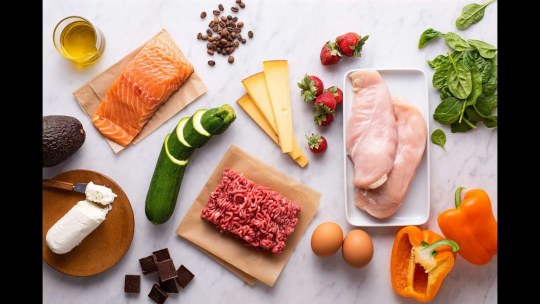
Market Drivers Fueling Growth
One of the primary growth drivers for the ketogenic diet market is the increasing prevalence of lifestyle diseases such as diabetes, obesity, and cardiovascular disorders. These conditions have prompted consumers to seek sustainable dietary solutions, and the ketogenic diet has emerged as a proven method for weight management and blood sugar regulation. The demand for low-carb and high-fat nutritional products has risen sharply as more people turn to this diet to achieve long-term health goals.
Another vital factor contributing to market expansion is the rise of digital health platforms and influencers who actively promote ketogenic lifestyles. Social media, wellness blogs, and fitness communities have played a pivotal role in spreading awareness about keto-friendly recipes, products, and success stories. This has not only amplified consumer engagement but also encouraged food and beverage companies to develop specialized ketogenic product lines such as keto snacks, dairy alternatives, meal replacements, and supplements.
Emerging Global Dietary Trends
Globally, there is a clear trend towards clean-label and minimally processed foods, and this aligns closely with ketogenic diet principles. Consumers are prioritizing transparency and looking for products free from artificial additives and sugars. As a result, keto-friendly foods that use natural ingredients and are high in healthy fats like avocado, coconut oil, and grass-fed butter are gaining widespread appeal.
Moreover, the ketogenic diet is no longer confined to North America. Its influence is expanding rapidly across Europe, Asia-Pacific, and Latin America. In countries such as Germany, Australia, India, and Brazil, there is a growing population of health-conscious consumers experimenting with ketogenic meals. Cultural adaptations and localized keto-friendly products are further boosting adoption rates in these emerging markets.
Product Innovation and Market Opportunities
Innovation remains a cornerstone of growth in the ketogenic diet market. Manufacturers are launching a diverse range of products, from keto protein bars and baking mixes to MCT oil-infused beverages and frozen meals. These innovations cater to different consumer needs, whether for convenience, taste, or nutritional value. Plant-based keto alternatives are also gaining popularity, as they cater to the rising demand for vegan and vegetarian ketogenic options.
The integration of functional ingredients such as probiotics, adaptogens, and collagen into keto products is another promising trend. These value-added features appeal to consumers looking for comprehensive health benefits in addition to weight loss. Moreover, e-commerce platforms have made it easier for niche ketogenic brands to reach global audiences, enhancing accessibility and market penetration.
Challenges and Outlook
Despite its strong growth trajectory, the ketogenic diet market faces a few challenges. These include misconceptions about the safety of high-fat diets, limited awareness in certain demographics, and high costs associated with specialty products. However, ongoing research, education, and product affordability improvements are expected to mitigate these issues over time.
Looking ahead, the ketogenic diet market is poised for sustained growth as more consumers seek efficient, science-backed dietary solutions for health and wellness. With continued innovation, global market expansion, and shifting lifestyle priorities, the ketogenic trend is set to reshape the future of nutritional consumption across all age groups.
0 notes